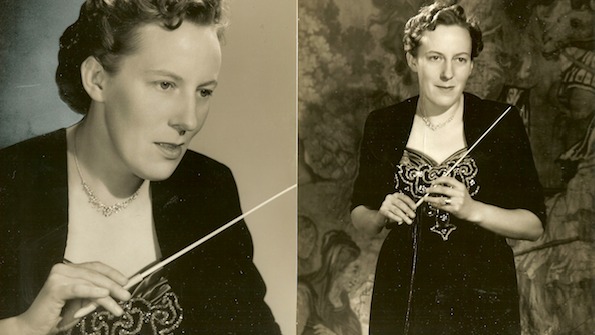A Female Perspective
female sexual experience
Gipps (1921-1999) was a prolific and pioneering woman composer and conductor; and according to Gipps’s biographer Jill Halstead, Goblin Market is the culmination of a series of Gipps compositions between 1939 and 1953 that “were preoccupied with tracing experiences from a female perspective” (p. 126) and that explore themes of sexuality, the female body, pleasure and punishment (pp. 126-27). Halstead specifically states that Gipps’s adaptation invites a contemplation of the poem’s more adult themes of sexual temptation and female erotic experience (p. 139).
Halstead focuses on Gipps’s expression of the female voice: “the female-centred world of the text is articulated using two female soloists and an all-female chorus, in a sound world that represents individual female relationships (intimate, spiritual, familial) and female sexuality” (p. 141). Indeed, the entire sound world of the cantata is feminine: the string orchestra accompaniment (traditionally seen as more feminine in character than a full orchestra) “exploits the softer, rounder sonorities of the string timbre to support the key facets of the narrative,” and the close harmonies of the vocal arrangement “generate a tightly blended, collective female voice” (p. 141).
musical themes
Halstead’s extended analysis (pp. 138-52) of Gipps’s composition is illuminating in identifying four main musical themes and showing how these melodic ideas support, and in some places even exceed, the textual meaning of the poem. Halstead identifies the narrative as the structuring element in Gipps’s composition: instead of letting musical themes structure the overall work, Gipps departs from her characteristic compositional approach and instead uses musical motifs “as a means of underscoring the narrative and accentuating particular meanings” (p. 141). Halstead sees Gipps’s departure from her usual approach to composition as enabling her musical commentary on the text: “The tying of specific melodic ideas to particular narrative ideas allows for a musical commentary that can operate in support of, or beyond, the actual meaning of the text at any point” (p. 141). For instance, when the goblins first entice Laura, they sing a simple unison melody in “slow waltz time,” described by Halstead as a “disarming musical gesture” that encourages the listener to see Laura as child-like, unaware of the consequences of giving in to temptation, and quite innocently perceiving the goblins as friendly and harmless (p. 146). While other later settings—for example, those by Kernis and Pen—depict Laura’s feast musically as a hectic, frenzied abandonment, Gipps emphasizes the sensual pleasures and a full appreciation of Laura’s experience. Halstead argues that Gipps foregrounds the sensual and erotic meanings in the text, for instance in depicting Laura’s feast on goblin fruit so as to encourage the listener to linger over the experience: “stressing the mesmerizing quality with broad, unhurried rhythms, gently descending string lines and more intricate, lush writing for the vocal parts, the underlying mood being soft and sensual rather than dramatic” (p. 148). In addition, audiences may well feel themselves seduced by the sound itself, as the music draws the listener into Laura’s experience of the sensual pleasures that the goblins offer.
Source:
Halstead, Jill. Ruth Gipps: Anti-modernism, Nationalism and Difference in English Music. Aldershot, Ashgate, 2006.



